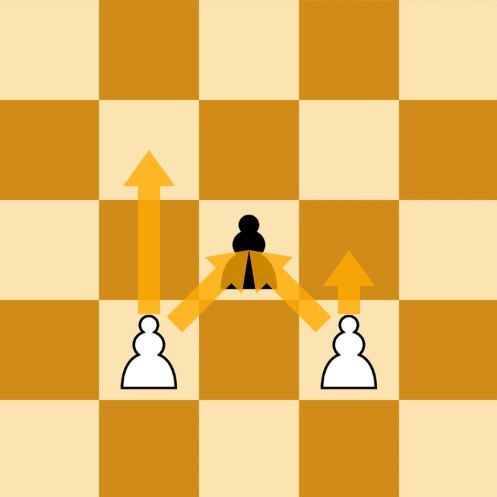Introduction
Chess is played on an eight-by-eight square chessboard with 32 pieces in total, 16 white and 16 black, each half controlled by one of the two players. The 16 pieces are: one king, one queen (worth 9 pawns), two rooks (worth 4 pawns), two bishops (worth 3 pawns), two knights (worth 3 pawns) and eight pawns, each having a distinct set of moves and rules.

The King
This is the most important piece in the game, as the main objective is to capture the enemy king. Whenever the king is attacked by a piece, the player must either move it out of the attack’s path or capture the enemy piece attacking it. It can move one square at a time (except when castling) as long as the move doesn’t result in him being under attack.

The Queen
She is the second most important piece, but can be considered as the weakest piece too, as every time she is under attack, she should move as to not get captured. She can move in any direction (horizontally, vertically and diagonally) however many sqares the player wants.

The Rook
This piece is the third most valuable piece. It can move horizontally and vertically any number of squares and can perform the special move of castling with the king.

The Bishop
This piece is equally valuable with the knight. It can only move diagonally, any number of squares, which makes the two bishops able to only move on the colour they start on.

The Knight
This piece is equally valuable with the bishop. It can move in an “L” shape (two squares forward, one square sideways) and is the only piece able to jump over other pieces.

The Pawns
These are the least valuable pieces in the game. They start the game protecting all the other pieces and can only move one square upwards, except a few cases: If a pawn hasn’t been moved since the start of the game, its first move can be two squares upwards. If there is an enemy piece on the immediate diagonal square, the pawn can also move diagonally to capture it. It can also perform a special move called “En passant”.